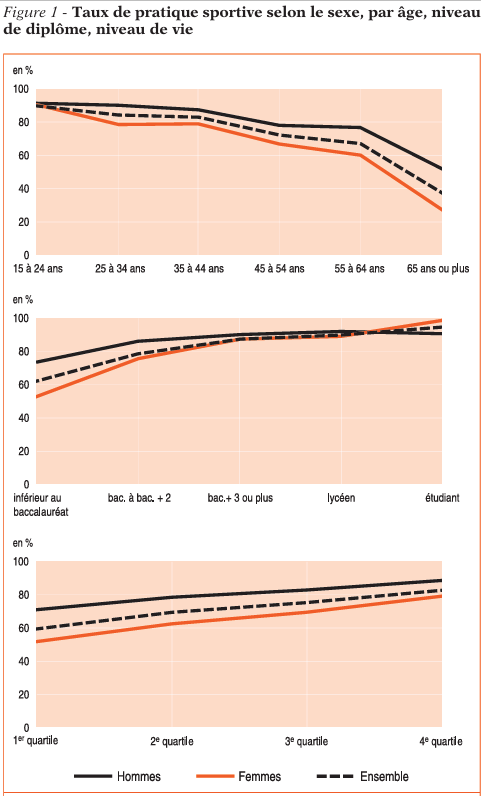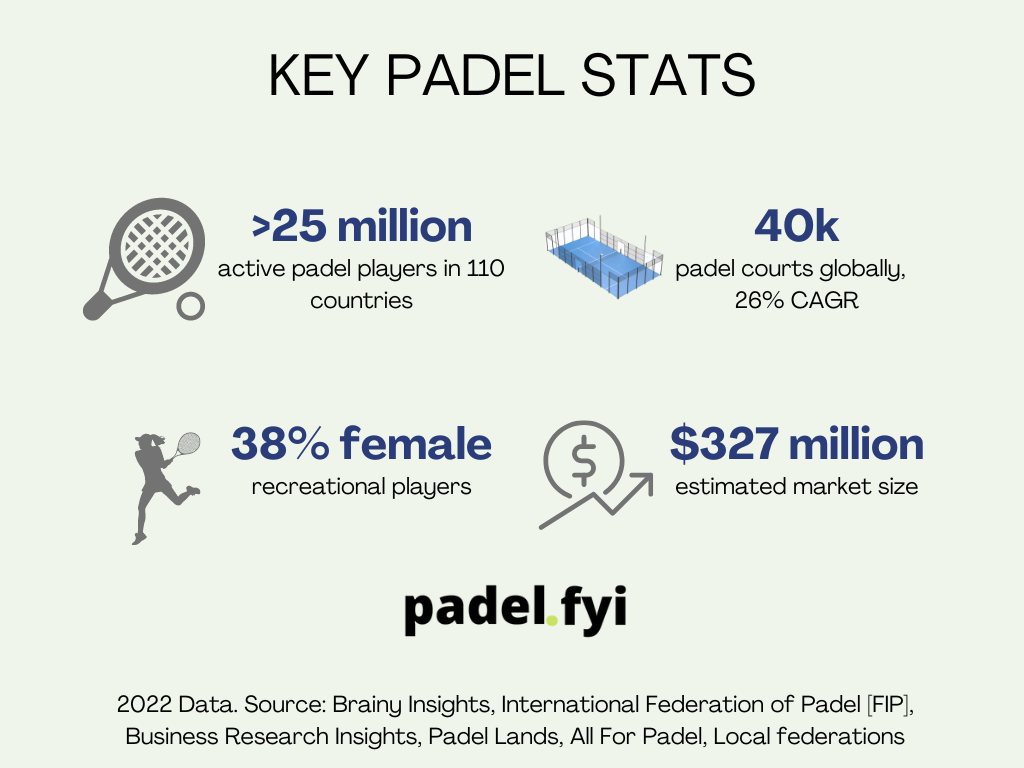


By age group The first graph shows the evolution of sports practice according to age.
There is a general downward trend with age, regardless of gender.
Men (black line) have higher rates of sports participation than women (red line) in all age groups.
The difference is notable from ages 15-24 but becomes less marked from age 65 where the rates drop sharply for both sexes.
The dotted line (together) shows an overall average that falls between the male and female rates.
By degree level
The second graph highlights a positive correlation between the level of diploma and sports practice.
People with a diploma greater than or equal to “bac +3” have the highest rates.
High school and college students show similar levels of practice, with a slight advantage for students.
Once again, men remain more active than women for each category, although the gap tends to narrow as the level of education increases.
By standard of living (quartiles)
The last graph illustrates a regular increase in sports practice with the standard of living.
ndividuals belonging to the 4th quartile (the richest) practice more than those in the 1st quartile (the poorest). The gender gap remains,
with men more active than women at all income levels. The average line closely follows the male curve, which reflects the dominance of men in terms of sports participation rates.
According to INSEE In 2020, two out of three people say they practice physical or sporting activity regularly. Regular practice is more common among men (71%, compared to 60% for women) and declines with age, first around age 30, then after age 50.
Some people do not do sports due to a lack of financial means to practice sport (purchase of equipment for example).
Nowadays, there are so many sports, these sports can be in teams or alone (football, bodybuilding, etc.) So each person can find their rare pearl in terms of sports due to the diversity of this market.
However, the prices for each sport are not the same because they do not require the same equipment, for example for football, you need cleats, shin guards, etc. while indoor bodybuilding does not require specific equipment. Some sports require purchasing a license (Football Club) or others a subscription (Weight Gym). So prices vary between license and subscription.
Market trends:
Today certain sports are emerging, as is the case with Breaking. Breaking is a style of urban dance. This sport is one of the new developments that took place during the 2024 Olympics. Thanks to events like the Olympics, these sports are gaining momentum, which makes it possible to increase the number of licensees.
Sports are accessible to everyone, including people with disabilities, because there is football for the blind, this sport is called Blind Football.
There are many connected devices to support athletes in their sports, this is the case of the connected watch because it allows you to time a race, know the distance covered, the speed, etc. This data makes it possible to analyze the different data.
Opportunities and risks:
Certain sports like Paddle attract new practitioners. For example, according to the FFT, Paddle has had an annual growth of +15% in practitioners since 2018, reaching more than 300,000 regular players in 2023 in France.

The Paris 2024 Olympic Games offer a platform to boost interest in several disciplines.
The 2024 Olympics generated around 11.8 billion euros in economic benefits and created up to 250,000 temporary or permanent jobs
On the other hand, with the proliferation of gyms, gyms may experience oversupply. This is the case for example in sports halls in Île-de-France because the occupancy rate has fallen by 10% since 2021.
Due to inflation, households are reducing their leisure costs. According to statistics In 2023, 34% of French people said they would give up certain sporting activities for financial reasons..